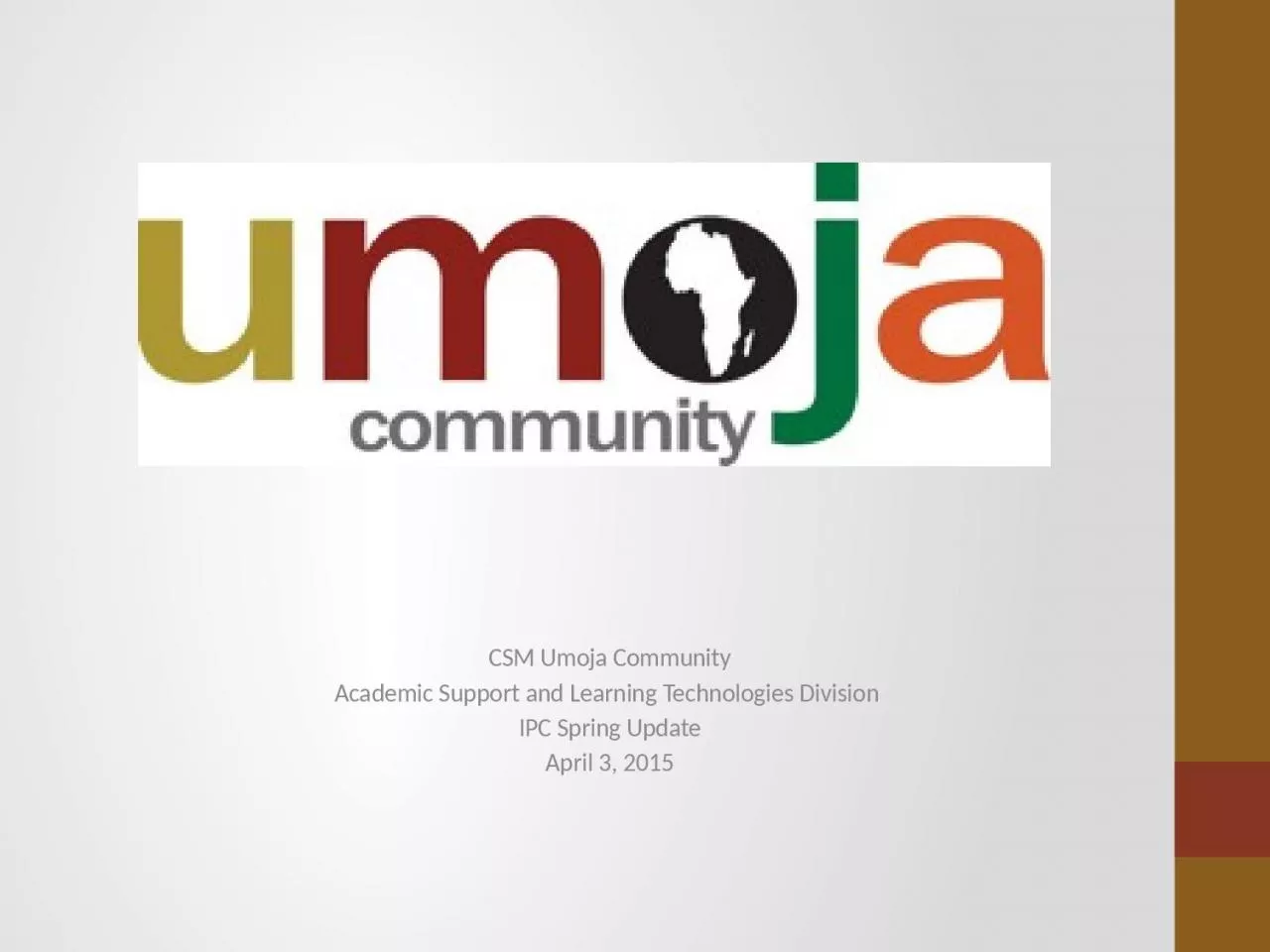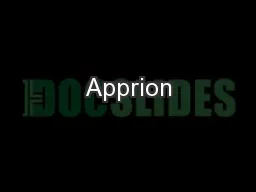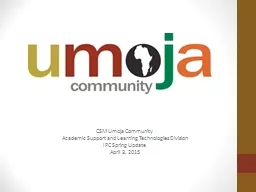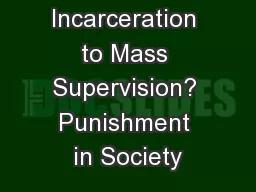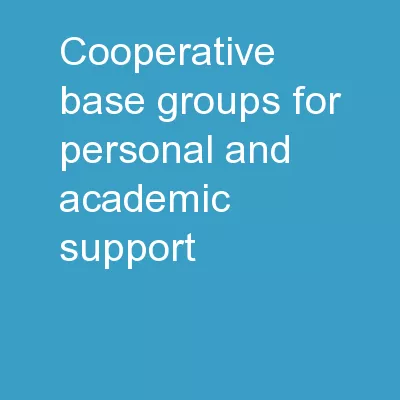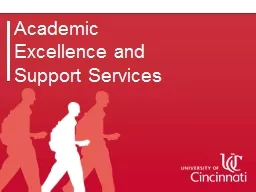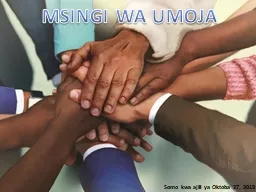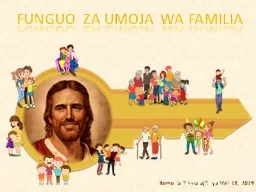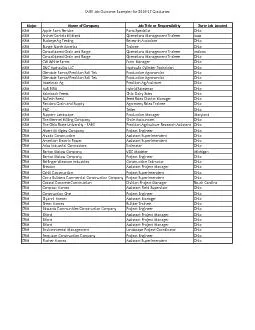PPT-CSM Umoja Community Academic Support and Learning Technologies Division
Author : amber | Published Date : 2024-02-09
IPC Spring Update April 3 2015 CurriculumProgram Structure 201415 AY Linked English and Ethnic Studies cohort model Fall English 838Ethnic Studies 105 Spring English
Presentation Embed Code
Download Presentation
Download Presentation The PPT/PDF document "CSM Umoja Community Academic Support an..." is the property of its rightful owner. Permission is granted to download and print the materials on this website for personal, non-commercial use only, and to display it on your personal computer provided you do not modify the materials and that you retain all copyright notices contained in the materials. By downloading content from our website, you accept the terms of this agreement.
CSM Umoja Community Academic Support and Learning Technologies Division: Transcript
Download Rules Of Document
"CSM Umoja Community Academic Support and Learning Technologies Division"The content belongs to its owner. You may download and print it for personal use, without modification, and keep all copyright notices. By downloading, you agree to these terms.
Related Documents

